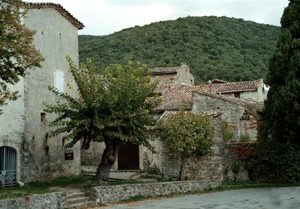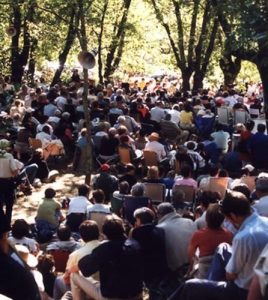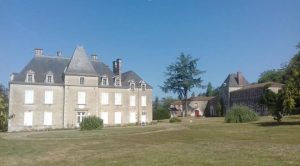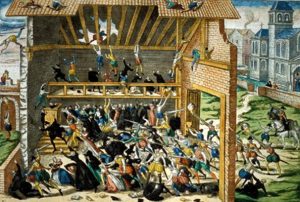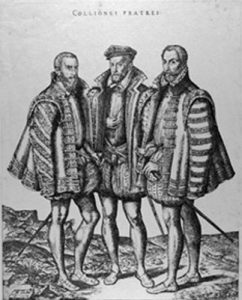The camisard Rolland's birthplace became a museum in the XXth century
The Désert museum was founded in 1910 by Frank Puaux and Edmond Hugues in the house where the camisard leader Rolland was born ; it had been bought at the end of the XIXth century by the Société de l’histoire du protestantisme français. From 1928 onwards Pierre-Edmond Hugues expanded it and new extensions were built in 1970 and in 1984.
The Désert museum is a historical museum. Its aim is to bring to life an important period of the history of French Protestantism – there are various methods : by recreating the inside of a typical Cevenol house, its kitchen and bedroom, by arranging a “scene” using wax models, just like in the musée Grévin, of members of a family holding a service in secret ; by displaying objects which were used for services in the Désert, (Bibles, Psalters, a communion chalice, folding pulpits), by showing a glimpse of the vast amount of repressive measures taken against the protestants such as edicts, rulings, arrests ; (there were so many that their resistance must indeed have been very strong) ; lastly, by the presentation of a series of XIXth and XXth century paintings, scenes taken from protestant history, which all bear witness to the deep faith of the artists (Girardet, Labouchère, Jeanne Lombard, Max Leenhardt).
The first part of the museum, situated in Rolland’s house, gives a chronological view of events :
- The beginning of religious persecution,
- The Cévennes revolt,
- The secret assemblies,
- The setting up once more of protestant Churches, under the guiding hand of Antoine Court,
- After the terrible Calas incident, Paul Rabout spread abroad ideas of tolerance, which would later culminate in the Revolution and the freedom to celebrate religious services without repression from the authorities.
Another, more recent part of the museum, the memorial, is arranged according to different themes. Here we can see four different kinds of persecution :
- The preachers and pastors of the Désert, who gave their lives for their faith – all of them died at the gallows,
- The Exodus of the 250,000 French Huguenots who preferred to go into exile rather than to be “reunited” with the catholic faith,
- Those who rowed in the slave ships because they refused to abjure their faith,
- The prisoners, especially those who were held in the Tour de Constance.
It would be a misunderstanding to consider this museum as though it were a torture-chamber, a collection of all the intrinsic horrors that an opposing power could inflict on its victims. We are shown details of the persecution because this helps us to understand firstly, the price the local people had to pay if they were to keep to their beliefs and secondly, why they put up such a show of resistance. It was in order to remain protestant in the future.
The Désert museum is a place where Protestants organise large assemblies
The special nature of this protestant museum compared to others lies in the fact that it has a religious as well as a historic role ; it is indeed a memorial to the past but it is also a place of protestant revival. This is why one of the first exhibits is about Luther and Calvin’s Reformation and the reasons why they broke away from the Church. This is why, too, in the middle of a historic tour, there is a room specially for Bible reading, as if to show that Christian freedom has its source in the Scripture. It is with this aim of revival in mind that “Désert assemblies” have been held here since the opening of the museum.
Every year on the first Sunday in September, thousands of protestants (from 15 to 20,000 each year), come to the Mas Soubeyran from the Cévennes and the Languedoc, from all over France and even from the countries of Refuge. The high point of the day is the morning service ; the afternoon is more festive ; every year there is something different, perhaps the commemoration of an important event (for example in 1986 it was the 450th anniversary of the beginning of the Reformation Movement in Geneva) or a major figure in the history of Protestantism (for example, in 1983, it was the 150th anniversary of Luther’s birth).
The Désert museum
Mas Soubeyran, Mialet
F-30140 Anduze
Tel. +33 (0) 4 66 85 02 72
Fax. +33 (0) 4 66 85 00 02
musee@museedudesert.com

